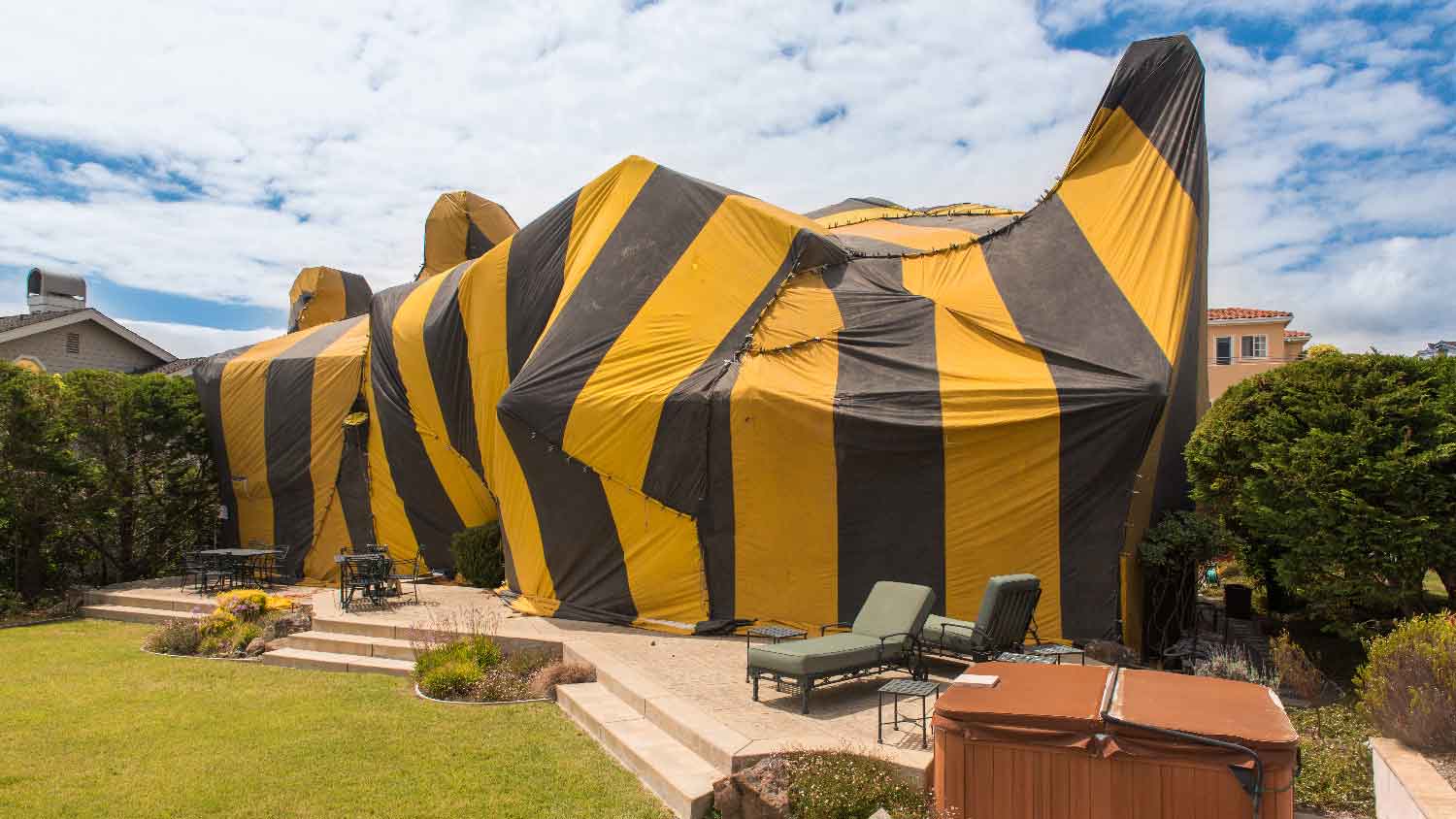
If you discover a wasp nest near your home, you’ll want to remove it ASAP. Learn wasp nest removal cost factors in this guide.
Insects and critters likely aren’t on your policy’s coverage list


Home insurance does not cover pest control in the majority of cases.
Insurers consider pest infestations largely preventable, so they don’t provide coverage for them.
If the damages from pests are sudden and unexpected, home insurance may make an exception.
Some insurance polices have add-ons for pest-related damage.
Nobody wants to share their home with uninvited pests. Whether it's termites in the walls or mice in the attic, infestations can cause damage quickly and get expensive fast. Unfortunately, home insurance does not cover pest control, except in rare and specific situations. Let’s take a look at pest control coverage and how to prevent an infestation.
While homeowners insurance covers events like fire, theft, and vandalism, it doesn't cover everything. In most cases, if you have pests in your home, you are responsible for exterminating them and repairing the resulting damage.
Insurance companies believe infestations are preventable; therefore, if the problem continues and you don't stop it, the insurer won't offer coverage. You will be responsible for paying for pest control services, including inspections, treatments, and any necessary repairs.
Depending on the insurance agency and circumstance, there are some exceptions to the “no pest control coverage” rule. Here are the primary examples of covered visits from an exterminator:
Directly linked to a covered event: If you can prove that a pest infestation was caused by an insurance-covered event, such as severe water damage, it may warrant coverage.
Secondary damage: Home insurance may also cover secondary damage, like if a raccoon chews through a wire and starts a fire.
Add-on pest coverage: Some insurance policies offer add-ons for pest-related damage, so it's worth checking with your provider to see if it’s an option for you. That said, even if your policy helps with pest-related damage, it likely won’t cover all costs.

Homeowners can easily prevent an infestation and subsequent damage by following these simple guidelines.
Pests love crumbs, dirty dishes, and clutter. These provide easy access to food and hiding spots, which pests and rodents need to survive and reproduce. Clean up spills, wipe down surfaces, and don't let dishes pile up. Throw out old food and trash, wash your sheets and clothes regularly, and if you have a chimney, keep it capped and cleaned.
A messy yard also invites pests to take up residence near or inside your home. Mow the lawn, bag leaves and debris, and don't pile mulch or firewood too close to the house. Trim trees and branches that touch your home. If you've got bird feeders, be aware that pests love a free meal, too.
Leaks and humidity attract termites and mold-loving bugs. Stay alert for standing water or leaks in your basement, attic, and crawlspaces. Fix drips right away and make sure your gutters send water away from your home's foundation to prevent water damage and a resulting pest problem.
Check any spots where pests could sneak in, including cracks, vents, and gaps. Look for droppings, chewed materials, or hollowed wood, especially in basements and attics. If you want professional help warding off an infestation, hire an extermination company in your area for guidance in sealing entry points and exterminating any pests.
From average costs to expert advice, get all the answers you need to get your job done.

If you discover a wasp nest near your home, you’ll want to remove it ASAP. Learn wasp nest removal cost factors in this guide.

How much does bee removal cost? Learn what you’ll pay based on factors like hive location, size of the infestation, extermination or removal, and more.

Tenting is a costly but effective way to exterminate termites. Learn the average termite tenting cost and everything that will factor into your budget.

Wasps are considered scary pests. But how do you tell a dangerous wasp from a helpful one? Here’s how to identify common types of wasps.

Pest inspection costs depend on the type of inspection, location, and other factors. Learn more about how much pest inspections cost with this guide.

Scorpions are creepy pests that you definitely don’t want near your living space. Find out how to keep scorpions away from your house.